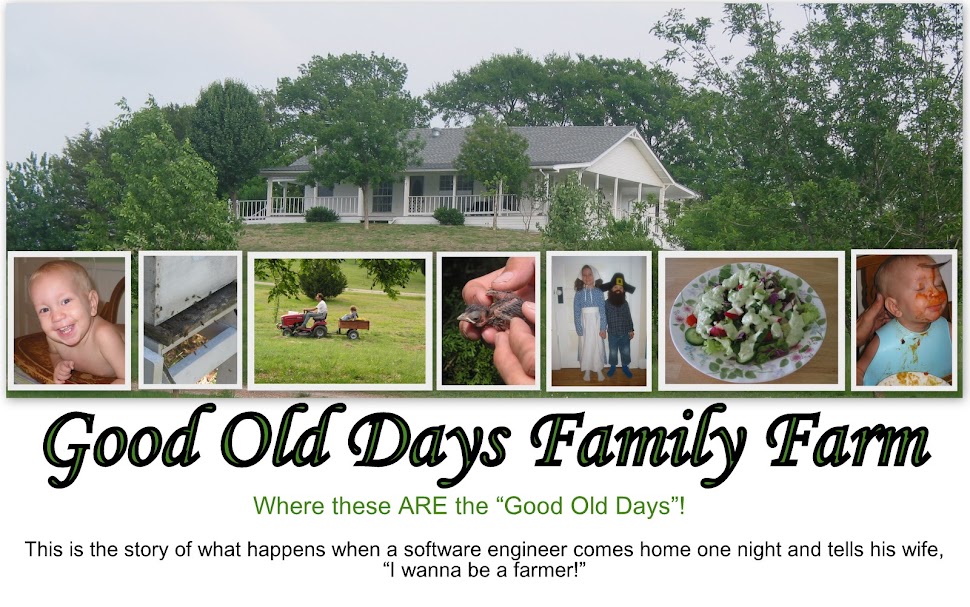I love making soap! It’s a creative and useful outlet for me and the Little Farmhands can help me with some parts of the process. Plus, all those essential oils make my kitchen smell wonderful as the soap dries!

It’s almost blasphemous to call handmade soap and commercial soap by the same word. Handmade soap is so luxurious it should have it’s own word! Give it a try and you’ll never want to switch back to store-bought commercial soaps! There are a few reasons it is so different. First of all, my handcrafted version is made with plant oils instead of petroleum based detergents. Also, commercial soaps often have the glycerin removed from them. Pound for pound, glycerin is more expensive than soap, so large manufacturers remove the glycerin to make hand and body lotions. I leave the glycerin in my soap which results in a very moisturizing bar of soap, indeed.
I often get asked about lye. Lye is what turns the oils into soap. It is highly caustic by itself, but when you mix it with water and the right proportion of oils, it triggers a chemical reaction which creates the glycerin. So, there is no caustic lye in a properly cured (dried) bar of soap.
I often get asked “How do you make your soap?” Since I’ve been (and will continue to be) making so much soap this week, I thought it would be fun to show you how I do it.
This is NOT a tutorial. If you want to make your own soap, please, for your own safety, get a book. I recommend “The Complete Soapmaker” by Norma Coney and “Smart Soapmaking” by Anne Watson. This is just a general tour for people who are curious enough to ask, but not curious enough to make their own soap!
The first thing I do is measure my oils. The measurements are based on weight and so I weigh out the correct amounts on an ordinary kitchen scale. I use a digital scale for the sake of accuracy:

Some of the oils are liquid (like olive oil) and others are solid (like palm oil).

The next step is to melt the oils until they are all liquid. Most people do this on the kitchen stove. I happen to be cheap. If we have a fire going in the woodstove anyway, then I just place the pot of oils on top the woodstove for a little while.

(Don’t mind the cheapie garden fence in front of the fire place. That’s to prevent little crawling farmhands or careless preschool farmhands from getting too close to the fire. They have learned not to cross that fence for anything!)
While I’m waiting for the oils to melt, I put on safety goggles, an apron, rubber gloves and a respirator mask. I measure out the water and lye on the kitchen scale and mix a lye solution. (That’s the part you need a book for. Lye is caustic and should be treated with great RESPECT.)
The Lye and water will trigger a chemical reaction and it will immediately heat up to extremely high temperatures. The trick is to get both the lye solution and the oils to cool so that they are about 100 degrees Fahrenheit at the same time. (Again, if you’re going to try this, read a book for instructions!)
Once the lye cools, you pour it into the oils and stir:

When I first started making soap, I stirred by hand. I have literally spent 1 1/2 hours standing in front of my stove just stirring. Now, I have discovered that a hand held immersion blender with thicken the soap very quickly!

See how thick and creamy that’s getting? This is thick enough, but I like to blend it for just a bit longer:

Unfortunately, I got distracted by little farmhands at this point and when I came back a few minutes later it had thickened even more. It’s not a problem, it’s just not necessary for the soap to be quite this thick before pouring it in to a primary mold:

At this point, the soap needs to set to harden. I’m not really sure why, but all the books say to “wrap” the soap so that it doesn’t “catch cold.” I just trust their advice and do as I’m told:

The soap will sit like this for several days or weeks until it is hard enough to grate. Then comes the fun part!
By this time, the soap is no longer caustic so the little farmhands can help. The first thing we do is grate the soap! Then we measure out 3 pounds of soap and melt it again:

Why would we melt it again? This is called “milling” and it results in longer-lasting soap. Once the soap completely liquefies, it is time to add fun ingredients that will give the soap special characteristics. Sometimes I add cucumber for a facial bar, or oatmeal for a soothing bar. This particular batch is called “Orange Blossom Pomander.” It is a fun, scentsy choice for the holidays. It has sweet orange essential oil with undertones of cinnamon and ginger. Mmmmm!
After being melted, the soap cools and thickens again. When it is just thick enough I pour it into another mold. These wooden molds were a great Craigslist find! Lining the mold with wax paper makes clean-up just that much easier!

I place this loaf pan in the freezer for a couple of hours until it is frozen solid. Then I slide it into this cutter which helps me to cut uniform bars:

I found a really great shelf at Goodwill. You can’t tell in this pictures but the shelves are little “baskets” that are just the right size for holding finished soap. I just laid some pegboard on top the shelves for soap that is still drying. I flip the soap over every morning and every evening until it is completely dry. This usually takes a couple of weeks.

And then the soap is ready to go! Mmmmm! I sure wish you could smell it!
[This picture is of Orange Blossom Pomander Soap (top shelf, left), Sweet Orange Soap (top shelf, right), Cucumber Soap (bottom shelf, right) and Oatmeal-Rose-Lavender (bottom shelf, right).]









































